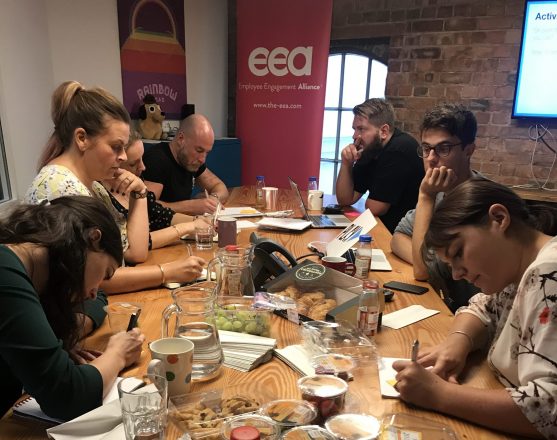In the post-pandemic battle over returning to the office, there’s good and bad news. The good news is that leaders and staff have had to become much more thoughtful to negotiate how work best gets done. The bad news is that the tenuous compromise of hybrid office life is often still not quite working well for everyone.
And in no case is this more apparent than when staff are dragged into the office only to sit on endless Zoom calls they could have taken from home. The lack of foresight inherent in such strange arrangements has become the source of endless TikTok video trends and at least one vulgar acronym.
Before we consider this a sign that we should all return to in-office, five days a week, let’s look at the stats: Only six of 158 U.S. chief executives surveyed by the Conference Board are prioritizing bringing workers back to the office full-time. Most recognize they will lose talent if they do so.
Hybrid work is likely here to stay. So, here’s one modest proposal for a big improvement: Focus on why and how meetings are run.
As author Erica Keswin writes in a piece for Harvard Business Review, if we want hybrid to work, the office day needs to be designed intentionally as one that employees won’t want to miss. Summarize it this way: “On-site is the new offsite.” Can we make the office as engaging and fun as when teams travelled out of town for an offsite? “At the very least, it’s critical to be intentional about how you plan your company’s days in the office, not only to add incentive, but also to make it worth your employees’ and your company’s time,” writes Keswin.
Crafting a better in-office experience is tougher than it sounds. In a workplace where teams are comprised of boomers, Gen Xers, millennials and Gen Z, how can leaders keep everyone happy using the various communications tools that get layered on year after year? And are you actively considering when, where and how to communicate and collaborate?
So, before scheduling your next meeting, consider these four questions:
- Does it have to happen?
Is your meeting the best way to advance progress for the collective good of everyone participating? When I was younger and less secure, I was rigorous about holding one-on-one meetings with my team members. As I matured, my trust in my own abilities and theirs evolved to where those meetings became optional. Consider whether the meeting is to calm your insecurities or if it actually advances the goals of the team. Ask yourself, is this topic better covered in Slack or via email? - Who must attend?
Harvard’s J. Richard Hackman found the best number of people in a meeting was four to six (with attendees capped at 10) because miscommunication increases “exponentially as team size increases.” Amazon’s Jeff Bezos popularized that concept as the “two-pizza rule,” the idea that no meeting should be so large that two pizzas can’t feed everyone. Ask yourself if everyone who has been asked to give up some of their time to attend your meeting really needs to be there for success. My meeting pet peeve is the “peanut gallery” that neither contributes any meaningful input nor helps advance the outcome. Consider sparing everyone the pain of the exhaustive invitee list. Those who do participate will be more likely to be candid, without a huge audience.








